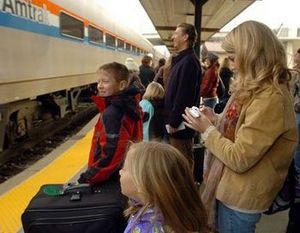Aired on PBS, Feb. 8, 2010
Blueprint America: Beyond the Motor City examines how Detroit, a symbol of America’s diminishing status in the world, may come to represent the future of transportation and progress in America. The film debuts nationally on PBS on February 8 at 10 pm (check local listings).
Detroit is the crucible in which the nation’s ability to move toward a modern 21st century transportation infrastructure is put to the test. The documentary shows how investments in the past — beginning with the construction of canals in the 18th century — profoundly shaped Detroit’s physical layout, population growth and economic development. Before being dubbed the Motor City, Detroit was once home to the nation’s most extensive streetcar system. In fact, it was that vast network of streetcars that carried workers to the area’s many car factories. And it was the cars made in those factories that would soon displace the streetcars in Detroit — and in every major American city.
Detroit’s engineers went on to design the nation’s first urban freeways and inspired much of America’s 20th century transportation infrastructure system — from traffic signals to gas stations — that became the envy of the word.
But over the last 30 years, much of the world has moved on, choosing faster, cleaner, more modern transportation and leaving America — and Detroit — behind. Viewers are taken on a journey beyond Detroit’s blighted urban landscape to Spain, home to one of the world’s most modern and extensive transit systems; to California, where voters recently said yes to America’s first high speed rail system; and to Washington, where Congress will soon decide whether to finally push America’s transportation into the 21st century.
Watch the video online at:
http://www.pbs.org/wnet/blueprintamerica/reports/beyond-the-motor-city/overview/940/

